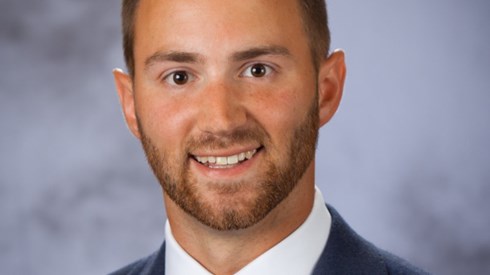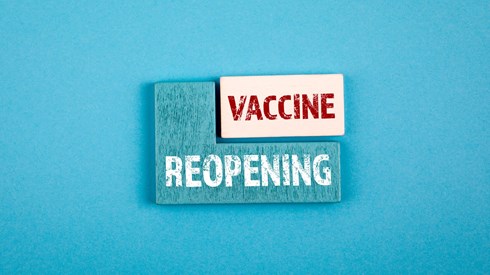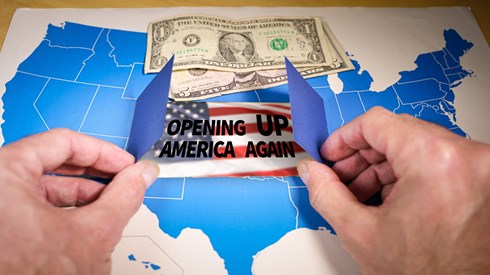Performa's Warren Miller: On Captive Insurance and Investment Programs

October 06, 2021

Warren Miller, a client relationship manager with Performa Investment Management in Charleston, South Carolina, is also responsible for working with Performa's marketing and business development team to cultivate new relationships. In addition, Mr. Miller develops relationships with existing clients and their service providers and assists in the development of new business opportunities.
Mr. Miller has been a conference task force member for various captive insurance associations. He is currently a member of the South Carolina Captive Insurance Association (SCCIA) and was the chair of the 2019 and 2020 SCCIA conferences. Prior to his joining Performa in 2014, he held various positions with BuysideFX, a foreign exchange software provider. Mr. Miller graduated with a degree in business administration from the University of Vermont.
In this interview, Mr. Miller discusses a wide range of captive issues, including investment strategies for captives and the future of the captive industry.
How did you get into the captive business?
I grew up in Vermont and attended the University of Vermont, but my first job was not in the captive industry. I started my career at a venture capital-funded financial technology start-up that was developing a foreign exchange trading platform for large institutional investors. My introduction to captive insurance came a few years later when I moved on from that role and joined Performa.
When did you join Performa, and what is the company's core business?
I joined the company in 2014 with no pre-existing knowledge of captive insurance and was more interested in the fact that Performa was an employee-owned, institutional investment manager. During my interview process, my now colleagues talked about being 100 percent focused on managing assets for captives. I remember being struck by not only the size and scope of the industry but also what a powerful tool self-insurance can be if implemented correctly.
Performa is an investment manager that has been fully committed to serving captives since 1992 with offices in Vermont, South Carolina, and Bermuda. As part of our core business, we help captive owners establish a road map for their investment programs and actively guide them through the captive life cycle from formation to development and maturity. Understanding the nuances of different structures and providing tailored investment solutions with a focus on capital preservation, income generation, and liquidity have been a hallmark for the last 30 years.
What are your responsibilities at Performa?
I am a part of the Client Service and Business Development team at Performa, where I am responsible for managing existing client relationships, as well as developing new business opportunities via our broad network of captive industry colleagues and the captive owner community. My role allows me to build lasting relationships with clients during the prospect phase and then stay heavily involved for years to come, which is a great benefit of working with a boutique firm like Performa and is personally very rewarding for me.
In addition to working with our existing clients and developing new relationships with prospective clients, I am an active member of the captive community. Through attending, sponsoring, and speaking at captive industry events, I stay engaged with the domiciles in which we operate. Finally, I spend time working with various captive associations on their committees and currently sit on the South Carolina Captive Insurance Association Board of Directors.
What differentiates Performa from its competitors?
The principal differentiator for us is our 100 percent focus on captives. We are not trying to be all things to all client types, which eliminates distractions, allows for specialization, and we believe provides a lot of value to our clients. As we all know, captives are unique entities and do not lend themselves to a one-size-fits-all approach. We dedicate the time and resources to understand each client's program to ensure that the investment portfolio is aligned with the liabilities and long-term goals of the parent company ownership. We are not distracted by trying to serve a variety of client types such as high net worth individuals, endowments, foundations, pensions, etc., which can make it difficult to customize portfolios that meet the changing needs of a captive as it moves through its life cycle.
Why is it important for captive owners to work with an investment manager that understands captive insurance?
There is a saying in the captive world that cannot be more accurate: "When you have seen one captive, you have seen one captive." Two captives with parent companies in the same industry can end up looking very different based on the types of risks they choose to write. Therefore, understanding the nuances of the liabilities within the captive is key to designing an investment portfolio that is well suited for each company.
While knowledge of insurance liabilities and, more specifically, self-insurance programs is vital, that's only part of the equation. When managing assets for captives, there is a host of other factors that are key to a successful program such as structure (single-parent captive versus group versus risk retention group), collateral arrangements (trusts and letters of credit), regulatory environment (domicile, onshore versus offshore), and providing responsive client service both to the captive owner and their key captive service providers, so that they can efficiently operate the captive. The list goes on, but I think you get the point.
Is there an ideal time for starting the process of developing an investment program for a captive? Is it ever too early?
We believe it is never too early for a captive to start the process of developing an investment program, although it is imperative to consider where the captive is in its life cycle. Too often, we come across captives that have gone through all the other formative steps but, for one reason or another, have not initiated an investment program. It is painful every time. Typically, a new captive should have a conservative portfolio focused on capital preservation, liquidity, and income generation. As the captive matures, gets comfortable with its loss experience, and builds surplus, we would then look to add higher return seeking asset classes as the captive is able to tolerate additional volatility within portfolio.
Initiating a portfolio early on, even if only a conservative allocation, can be powerful for a young captive, given that it typically takes a good bit of time for claims to develop. Taking advantage of "float" to earn a return on the assets before claims are paid can improve the financial position of the captive and help pay for program expenses. This benefit can be even more dramatic for captives writing longer-tail coverages where claims will not develop for years down the line.
What should captive owners be thinking about when establishing an investment program?
The first step is to realize that there is an opportunity cost associated with waiting to initiate an investment program. Forgone investment income will only act as a drag on the financial performance of your new captive. Once the decision has been made to establish an investment program, the next step is to research potential investment partners with captive experience, which your captive manager typically can help with. Once you identify your investment manager, work with them to develop the captive's investment policy statement. The investment policy statement should provide enough flexibility for the captive to start with a conservative portfolio, as most captives do until they get more comfortable with their claims experience, but also allow for the addition of other classes down the road.
Once a captive's investment program is established, what are best practices to ensure it is running successfully going forward?
Once a captive's portfolio is up and running, there are several key components that contribute to an investment program running at maximum efficiency, including reporting, compliance monitoring, performance benchmarking, and general communication with your investment manager. The investment manager should provide clear and timely reporting on portfolio positioning as well as compliance metrics to ensure that the portfolio is within the predetermined risk parameters established within the captive's investment policy statement.
Performance is the most obvious metric to report on when it comes to investments, but it is crucial to establish appropriate benchmarks for both the total portfolio as well as the individual strategies in advance of implementation. No manager will outperform in all environments, but it is important to remain consistent in your approach to benchmarking with indices that match the strategies employed. Lastly, we always enjoy attending client board meetings to build relationships with our clients and communicate how the investment portfolio is performing.
What challenges are captives facing within their investment portfolios?
Captive insurance companies typically have conservative portfolios with a substantial allocation to investment-grade bonds to help fund their liabilities. As such, the current low yield environment has made it difficult for captives to generate a return on their assets. Going forward, as the economy recovers and the Federal Reserve removes emergency levels of accommodation, interest rates should rise. Interest rates and bond prices have an inverse relationship, so bond portfolios will experience negative price pressure as rates move higher. While the rising rate environment will be a headwind for fixed income strategies in the short term, the silver lining is that new premiums can be invested at higher rates.
Your readers are probably thinking, "What about equities?" Growth assets, such as equities and high yield bonds, are near all-time highs as well, so we encourage captive owners to take a balanced approach, be selective within their growth asset allocation, and stick to their long-term plan, even if we see meaningful bouts of volatility as the Fed accommodation is wound down. While we know that rising rates will be a headwind for fixed income strategies, the impact on equities is not as simple and will have uneven effects on different sectors of the market.
What is your outlook for the captive industry as a whole?
My outlook for the captive industry is extremely positive. The hardening market has caused a lot of companies that were on the fence to form captives already, as we have seen with the strong growth in 2020 and so far in 2021. I expect that trend to continue and believe that we will see robust growth not only in the number of new captives but in the premium volume written by existing captives as well. It has been clear from attending client meetings that most boards are looking at additional ways to utilize their captives as they work through renewals with traditional insurers and are looking at large increases across a host of different coverages. All signs point to an exciting growth phase for the captive industry, and we are excited about the prospects for growth here at Performa as well!
Mr. Miller is pictured above. (Courtesy photo.)
Disclosure: Opinions, estimates, and assumptions expressed herein are as of the date of publication and are subject to change without notice. This material should not be construed as formal investment or financial planning advice nor as a solicitation to purchase or sell specific securities or investment strategies. P.R.P. Performa Ltd. is licensed to conduct investment business by the Bermuda Monetary Authority (BMA). Performa Limited (US) LLC is a Securities and Exchange Commission (SEC) registered investment advisor. Neither the licensing nor registration imply that BMA or SEC has approved or disapproved of Performa services, products, or strategies.
October 06, 2021





